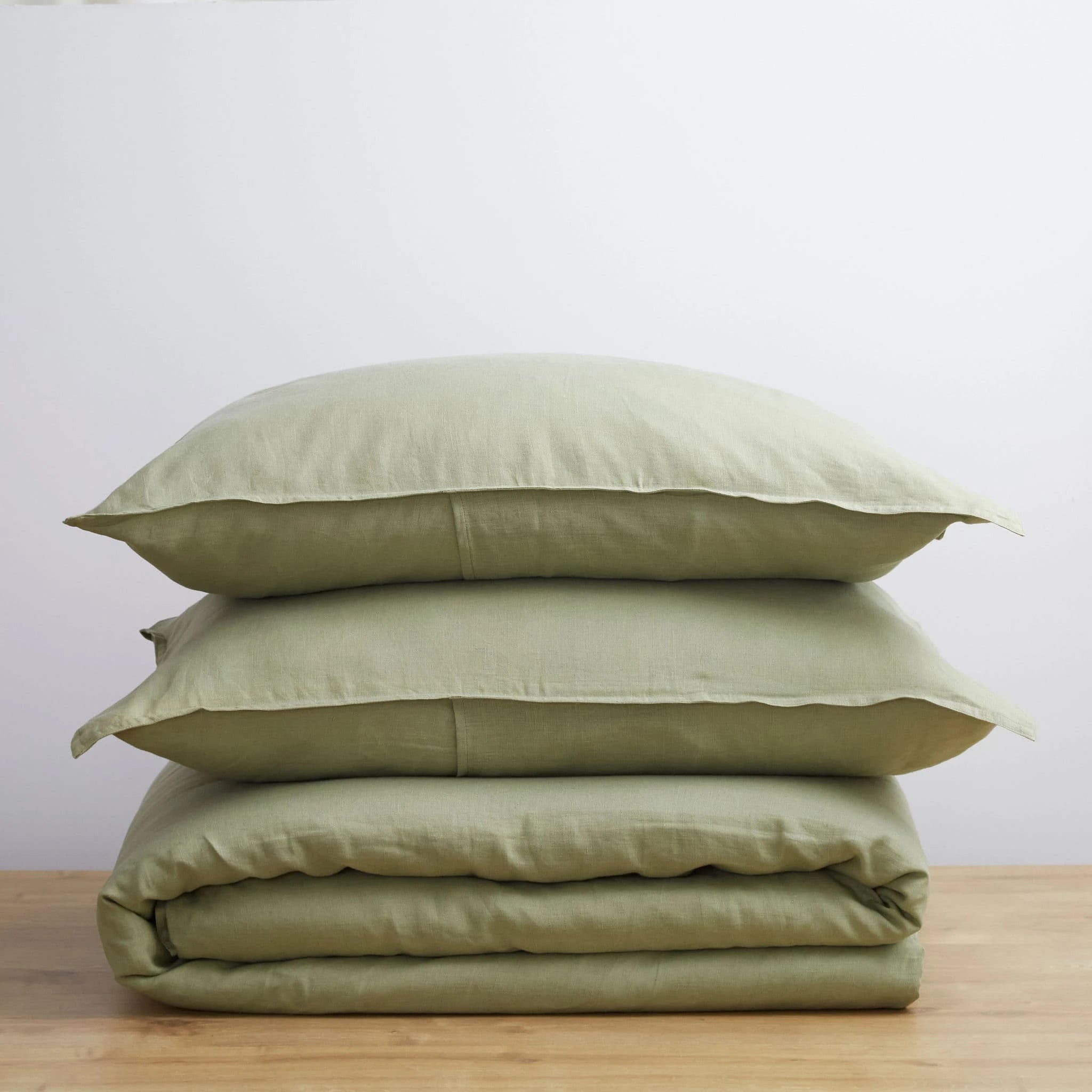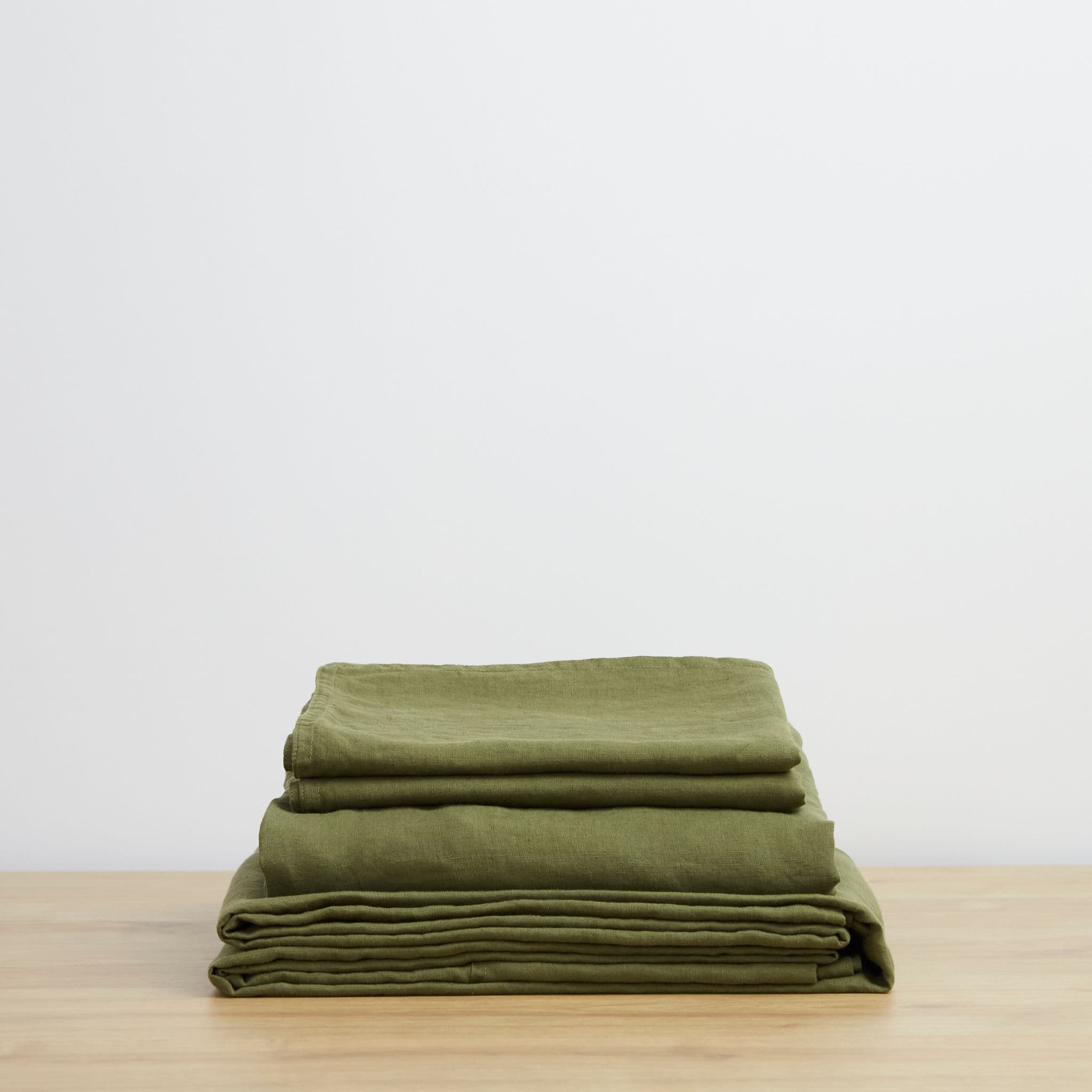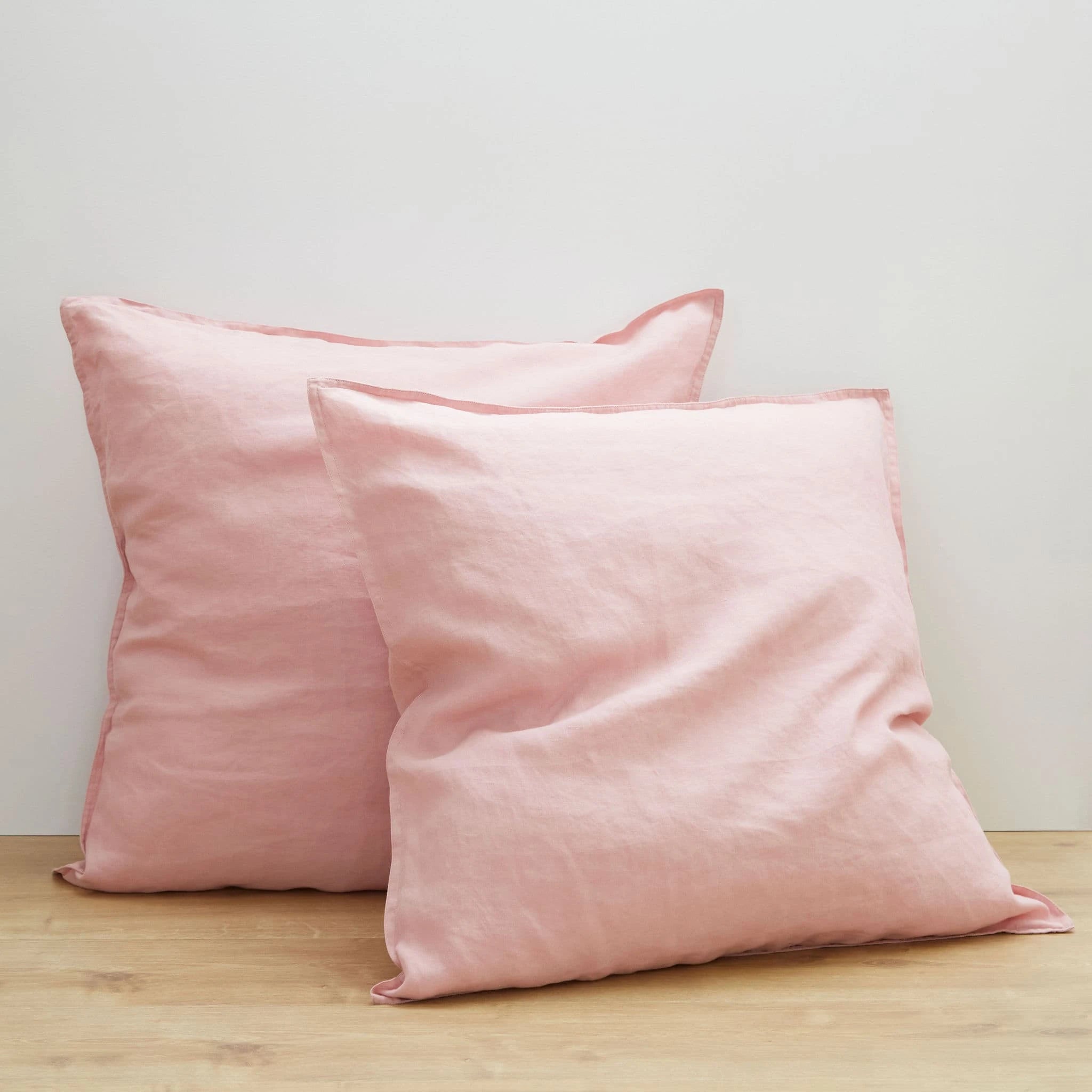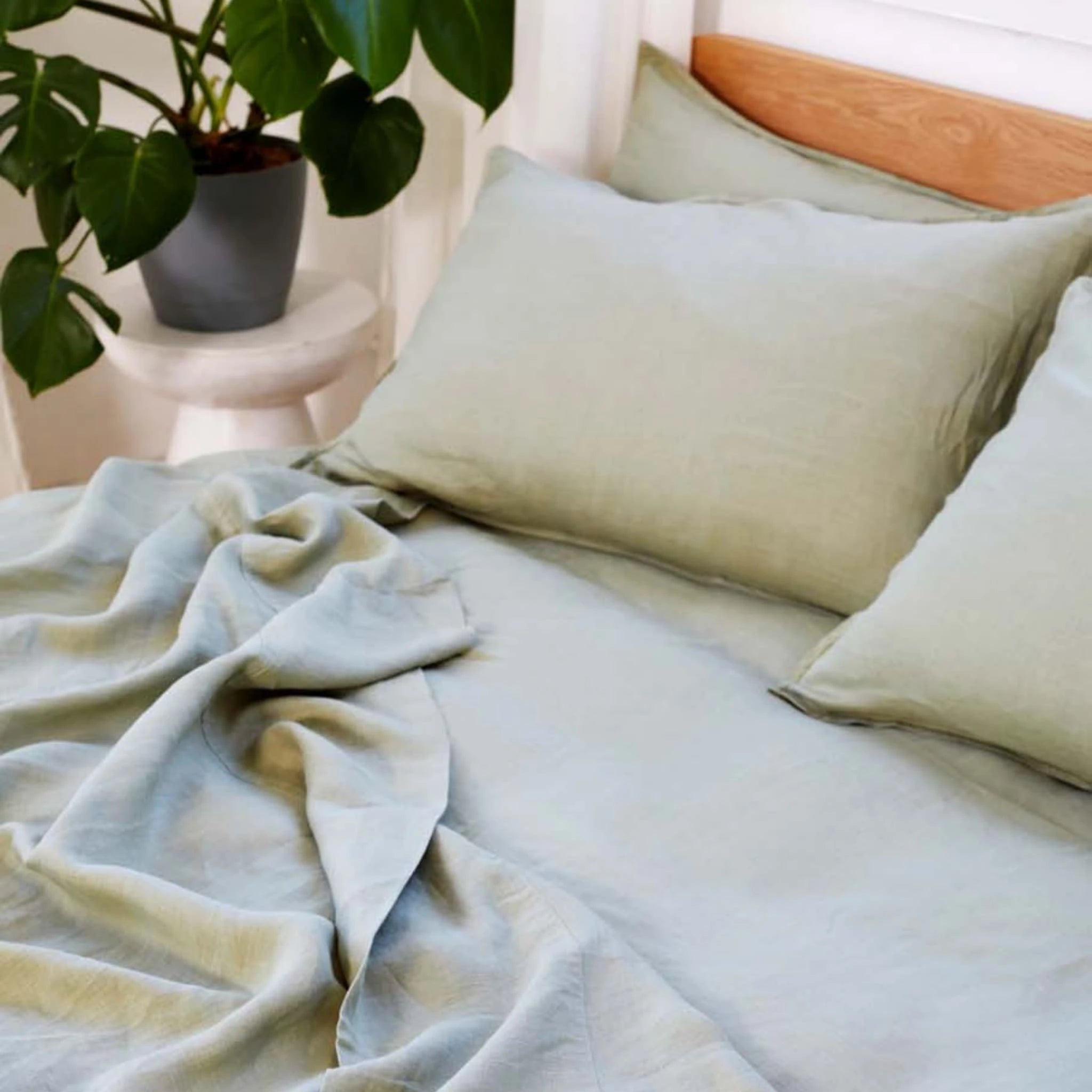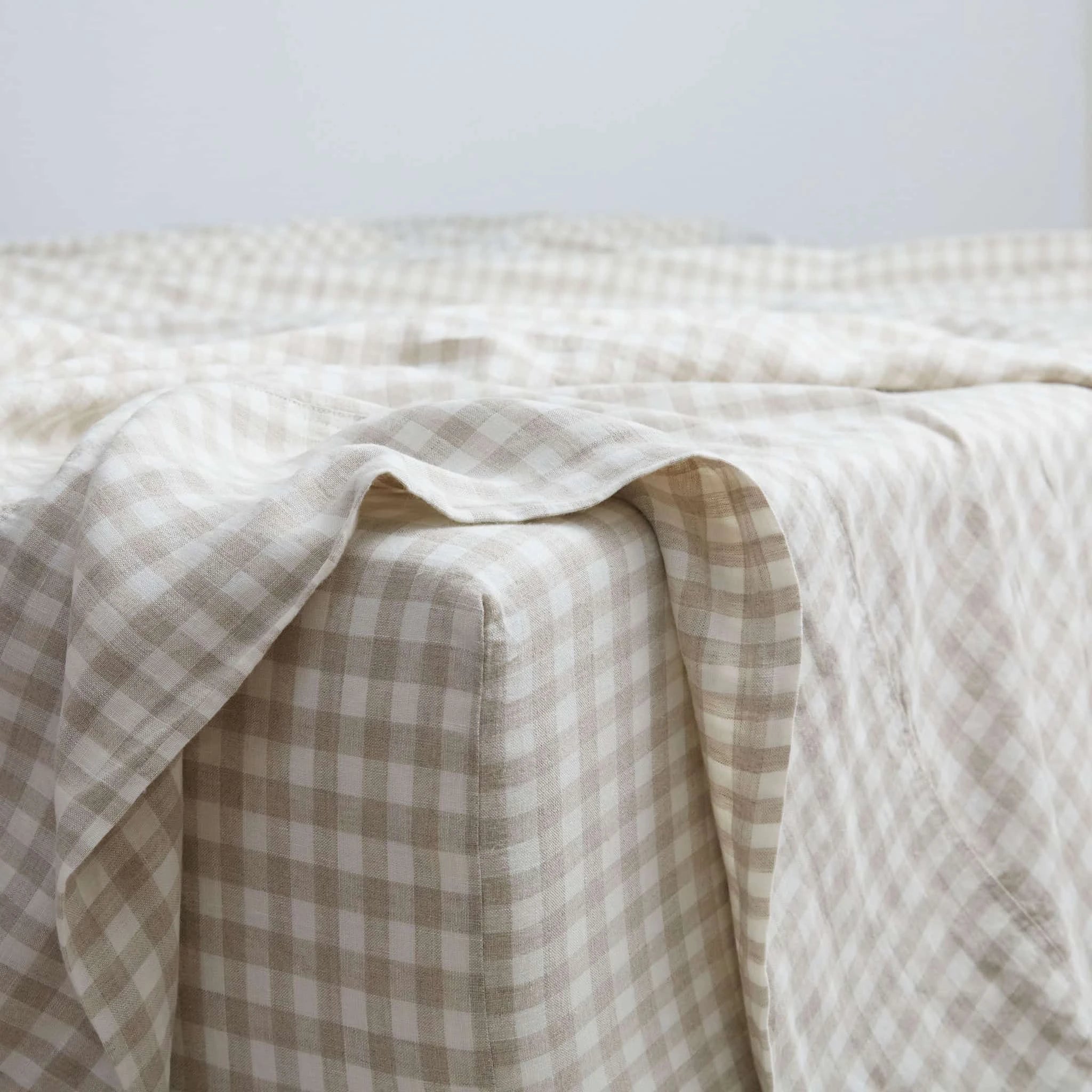Care Guide
Our linen is made from top-quality natural fibers and is designed to last. But to keep it in great condition and avoid any damage, it's important to take good care of it.
FAQs
European French flax linen is a high-quality natural fabric made from flax fibers grown in France. Like most natural fibers, flax linen may shrink or become damaged if not cared for properly during washing. Therefore, it is important to wash European French flax linen with like materials on a short cold cycle to avoid any potential damage. Washing flax linen with like materials ensures that the fibers do not get tangled or snagged on any othermaterials in the wash. This can lead to tears or pilling, which can reduce the lifespan and appearance of the linen. Additionally, washing flax linen on a short cold cycle helps to prevent excessive agitation, which can also damage the fibers. Using a cold cycle for washing European French flax linen is important because hot water can cause the fabric to shrink or lose its shape. Flax fibers are relatively delicate and can be easily damaged by high heat or strong agitation. Using a short, gentle cycle with cold water helps to minimize these risks and prolong the lifespan of the linen. Overall, washing European French flax linen with like materials on a short cold cycle helps to preserve the quality and appearance of this high-quality natural fabric.
Releasing creases, removing, shaking, and hang-drying European French flax linen in shade until it is completely dry is important for several reasons. Firstly, linen has a tendency to wrinkle easily, and creases can become deeply embedded in the fabric overtime. By releasing creases and shaking the linen before hanging it to dry, you can help prevent these wrinkles from becoming permanent. Secondly, hang-drying European French flax linen in the shade helps to protect the fabric from damage. Exposure to direct sunlight can cause linen to fade or become discolored, especially if it is wet. Hanging the linen in a shady spot allows it to dry without being exposed to harsh UV rays. Finally, allowing the linen to air dry completely is important to prevent shrinking or warping. Linen fibers can contract when exposed to heat, which can cause the fabric to shrink or become misshapen if it is not dried properly. By air-drying the linen completely, you can help ensure that it maintains its original shape and size. In summary, releasing creases, removing, shaking, and hang-drying European French flax linen in shade until it is completely dry helps to preserve the quality and appearance of the fabric. It can prevent wrinkles from becoming permanent, protect the linen from damage caused by sunlight, and ensure that the fabric does not shrink or warp during the drying process.
Hanging your linen to air dry under shade is the simplest and best method of drying. The weight of the fabric naturally eases wrinkles, though to accelerate this, one may consider hanging it in a steamy bathroom for a few minutes. Steam allows the wrinkles to release naturally. Avoid drying in the sun as harsh sun rays can fade and damage the fabric. If the above natural methods does not bring satisfaction, you can tumble dry or iron on a cool to warm mode. DO NOT use high heat settings as this can damage or shrink the fabric. You can also consider using a steamer instead of an iron, as steam is gentler on linen and can help to remove wrinkles without causing damage.
It is recommended not to dry clean, bleach, soak, or use fabric softeners on European French flax linen because these cleaning methods can damage the fabric and shorten its lifespan. Dry cleaning involves using harsh chemicals to clean the fabric, which can weaken the fibers and cause the linen to become brittle over time. Additionally, the solvents used in dry cleaning can strip the natural oils from the linen, which can cause it to lose its softness and become stiff and uncomfortable. Bleaching can weaken the fibers of the linen and cause it to become discolored or faded. Additionally, bleach can react with any residual soap or detergent in the fabric and cause it to become yellow or brown over time. Soaking can also be damaging to European French flax linen, as prolonged exposure to water can cause the fibers to weaken and become brittle. Additionally, soaking can cause the linen to become misshapen or lose its natural texture. Fabric softeners are not recommended for use on European French flax linen because they can coat the fibers and reduce the fabric's absorbency. Additionally, fabric softeners can contain harsh chemicals that can damage the fibers over time. In summary, European French flax linen is a delicate fabric that should be cared for gently to prolong its lifespan. It is recommended to avoid dry cleaning, bleaching, soaking, or using fabric softeners on this fabric to prevent damage and preserve its natural texture and softness.
It is important to avoid overloading the washing machine when cleaning your European French flax linen
to ensure that the fabric is cleaned effectively and to prevent damage to the linen. Overloading the washing machine can prevent the linen from moving and agitating properly during the wash cycle, which can result in uneven cleaning and damage to the fabric. Additionally, overloading the machine can cause excessive friction between the linen and other items in the wash, which can cause pilling, tears, or other damage. Washing European French flax linen in small loads can help to ensure that the linen is cleaned thoroughly and without damage. It allows the linen to move freely in the wash, which helps to remove dirt and stains without causing damage to the fabric. Additionally, washing European French flax linen in small loads can help to prevent tangling and snarling of the fabric, which can also cause damage. In summary, avoiding overloading the washing machine when cleaning your European French flax linen is important to ensure effective cleaning and prevent damage to the fabric. Washing the linen in small loads can help to ensure that it is cleaned thoroughly and without damage.




